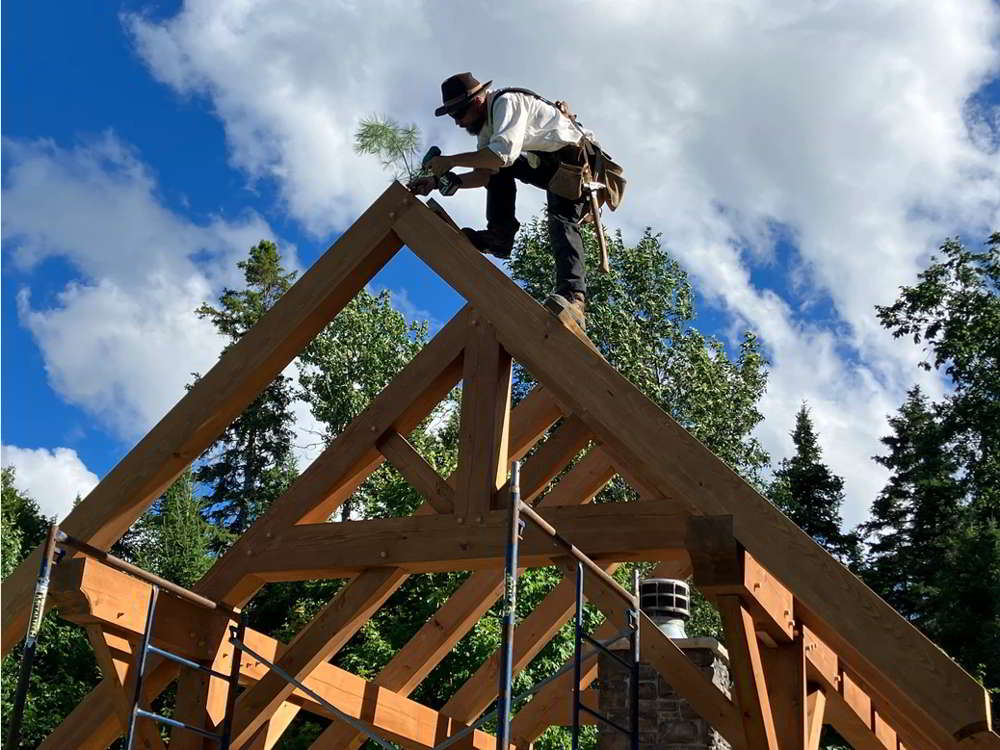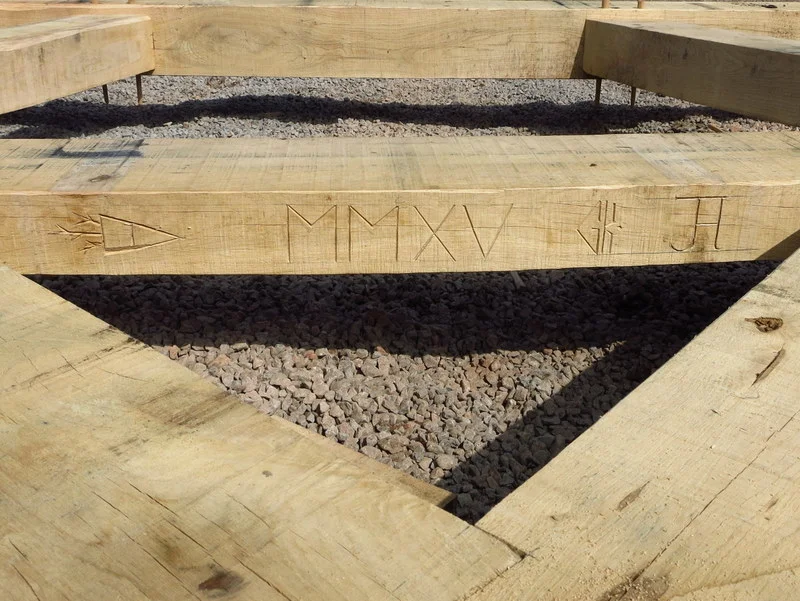Timber framing isn’t just about erecting structures; it’s an art form rich in history and brimming with traditions that connect us to the craftsmanship of yesteryears. This building technique, revered for centuries, embodies more than the sum of its parts, weaving stories and customs into the very beams that support our homes.
The Topping Out Ceremony
Among the many cherished traditions, the “Topping Out Ceremony” stands out for its beauty and symbolism. When the final timber is placed, a small evergreen tree or bough is affixed to it, a nod to the forests that provided the timber and a blessing for the house’s future inhabitants. Typically the same species as the timbers that went into the frame, it’s a tradition that transcends construction, celebrating the completion of the frame, the unity of those who built it, and the promise of growth and prosperity for the occupants. The youngest crew member is traditionally tasked with harvesting the bough and affixing it to the highest point of the frame, as the rest of the crew and the clients look on and cheer him (or her) up the steep rafter beams with a raised glass. Will he make it?

Once the bough is affixed, a celebration ensues. Traditionally hosted by the owners, the lavish feast invites the tradespeople involved in the making of the frame to a table laden with food and drink. As the night goes on, dances ensue, accompanied by live music, leaving no person a stranger in this celebration of a new frame born. Stories and laughter fill the air, creating a sense of unity and camaraderie among all present, marking the beginning of the frame’s history with a memorable gathering.
The Signing of the Frame
Equally meaningful is the tradition of signing the frame. Before the structure is raised, everyone involved, from the craftspeople to the future homeowners, is invited to leave their signature on the beams. The signatures are usually concealed, not visible from the floor. This act transforms the frame into a living document, bearing the marks and well-wishes of those who breathed life into its timber. It’s a testament to collaboration and personal investment, ensuring that the essence of the community is ingrained in the home.


The Carpenter’s Coin
There’s also a lesser-known but deeply poignant tradition: the placement of a “carpenter’s coin”. This involves embedding a coin under a post or within a hidden part of the frame. The coin, often dated for the year the house is built, is meant to bring good fortune to the home and its dwellers. It’s a silent guardian of the past, a token of luck for the present, and a hidden treasure for the future. This tradition, subtle yet significant, links the home to the era of its creation and serves as a lasting emblem of the carpenter’s dedication and hope for the home’s enduring legacy.


These traditions reveal that timber framing is a craft that does more than just create buildings — it fosters connections across time, celebrates the natural world, and embeds layers of meaning into the structures we call home. From the shared joy of the Topping Out Ceremony to the personal signatures marking the frame and the secret blessing of the carpenter’s coin, each custom enriches the building process. They ensure that timber framing remains not just a construction method but a celebration of human skill, collective effort, and the timeless dialogue between nature and craftsmanship.
